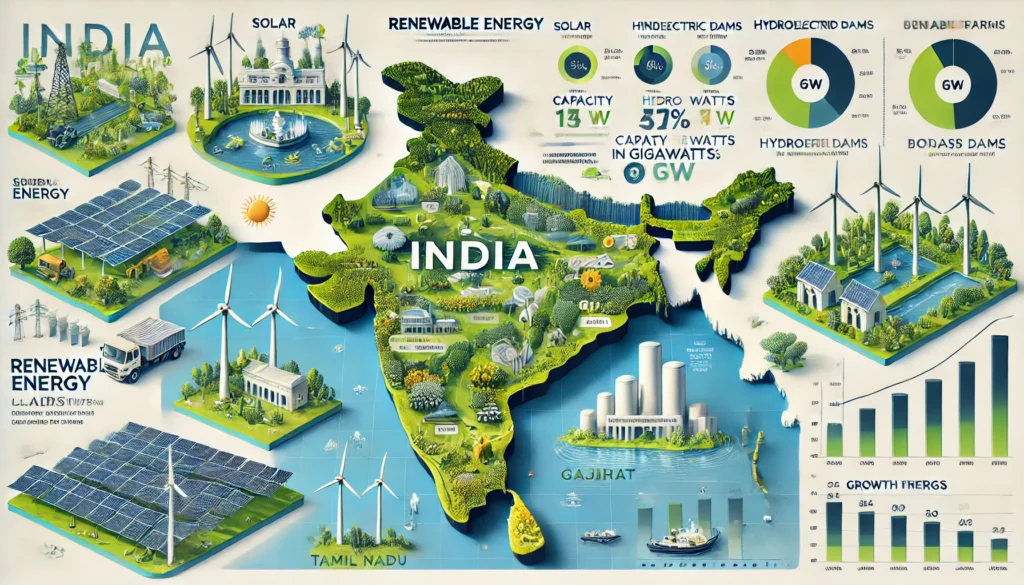
Why in the News?
- According to Ministry of New and Renewable Energy, India’s renewable energy
- capacity grew by 165% in 10 years, rising from 76.38 Gigawatts (GW) in 2014 to 2031
- GW in 2024.
What is Renewable energy (RE)?
- It is energy derived from natural sources that are replenished at a higher rate than they are consumed. Renewable energy sources are plentiful and all around us.
- For Example: Solar Energy, Wind Energy, Geothermal Energy, Hydro Power, Ocean Energy, Bio Energy.
Current Status of RE in India
- The share of RE in the total installed generation capacity in the country stands at 43.12%.
- India ranks fourth globally in renewable energy capacity.
- 4th in Wind Power (46.65 GW) capacity and 5th in solar photovoltaic power (85.47 GW).
- First time crossed 200 GW capacity from non-fossil fuel sources.
- It includes Solar power: 85.47 GW, Large hydro power: 46.93 GW, Wind power:46.66 GW, Biopower:10.95 GW, Small hydropower:5.00 GW, Waste to Energy: 0.60 GW.
RE targets in India
- India aims reaching a non-fossil fuel energy capacity of 500 GW by 2030.
- Fulfilling at least half of its energy requirements via RE by 2030.
| Significance of Renewable Energy | Details |
| Reducing greenhouse gas emissions | By 2030, India will reduce the carbon intensity of its economy by less than 45%. |
| Improving energy security | By relying on locally available resources, countries can reduce dependence on foreign energy sources. |
| Providing access to energy | It can help to reduce poverty and improve quality of life by providing accessible lighting, cooking, and heating. |
| Creating jobs | The growth of the solar power industry has created a large number of jobs in the production of solar panels. |
Key Initiatives taken to promote Renewable Energy in India
- FDI: Up to 100% FDI is allowed under the automatic route for renewable energy generation.
- PM Surya Ghar Muft Bijli Yojana: Aimed to install rooftop solar plants in one crore households with a total financial outlay of ₹75,021 crore and to be implemented until FY27.
- Green Energy Corridor (GEC) projects: Initiated to facilitate renewable power evacuation and reshaping of the grid for future requirements.
- Solar Parks Scheme: To provide solar power developers with a plug and play model, by facilitating necessary infrastructure along with all statutory clearances.
- National Green Hydrogen Mission, 2023: The mission targets to achieve about 5 million metric tonnes (MMT) of annual Green Hydrogen production capacity by 2030.
